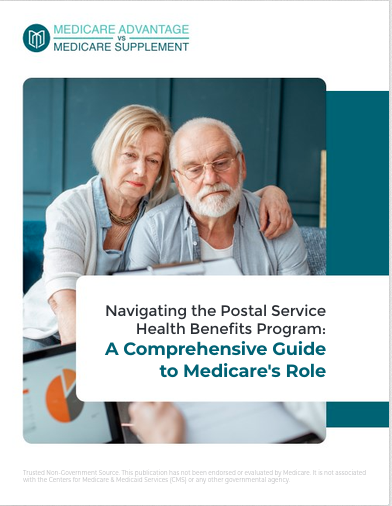Key Takeaways:
- Understanding Medicare’s different parts is essential for making informed decisions about your healthcare coverage.
- Knowing the nuances between Medicare Parts A, B, C, and D can help you navigate costs, coverage, and benefits effectively.
Sorting Through Medicare’s ABCs: Why Understanding the Parts Is More Important Than Ever
Navigating the world of Medicare can feel overwhelming, with its various parts and options. Many individuals approaching Medicare enrollment are unsure of what each part covers and why it’s relevant to their specific healthcare needs. Understanding Medicare’s structure isn’t just beneficial; it’s crucial for ensuring you get the coverage that best suits you. Let’s break down the essential details of each part and clarify why knowing the distinctions between them is more critical than ever.
What Exactly Are the Parts of Medicare?
Medicare is divided into four main parts—Part A, Part B, Part C, and Part D. Each part serves a specific function and covers different aspects of healthcare. Here’s a brief overview:
- Part A: Often referred to as hospital insurance, Part A covers inpatient hospital stays, care in a skilled nursing facility, hospice care, and some home health services.
- Part B: This part is medical insurance. It covers services such as doctor visits, outpatient care, preventive services, and some forms of medical equipment.
- Part C (Medicare Advantage): This is an alternative way to receive your Medicare benefits. Private insurance companies offer Medicare Advantage plans, which must provide at least the same coverage as Parts A and B but often include additional benefits, such as vision, dental, and hearing services.
- Part D: This part offers prescription drug coverage. It helps cover the cost of prescription medications, protecting against high expenses for needed drugs.
Understanding these four parts is the first step to grasping how Medicare works. But knowing what each part covers isn’t enough; you must also understand how they interact with one another and what they mean for your healthcare planning.
Why Is Understanding Medicare Important?
Medicare is not a one-size-fits-all solution. What might work for one person may not necessarily fit another’s healthcare needs or budget. Choosing the wrong plan or not understanding the coverage could lead to unexpected costs or limited access to necessary healthcare services.
As healthcare costs continue to rise, having a deep understanding of Medicare’s various parts is essential for financial planning and overall health security. Whether you’re approaching 65, managing a chronic condition, or simply planning for the future, being informed ensures you get the most out of your benefits.
What Does Medicare Part A Cover?
Medicare Part A covers hospital stays and related services, but it’s not as simple as just walking into a hospital and getting all your care covered. Generally, Medicare Part A includes:
- Inpatient hospital care
- Skilled nursing facility care (but not long-term care)
- Hospice care
- Limited home healthcare services
Many people qualify for premium-free Part A, but there are still costs to consider, such as deductibles and copayments. It’s important to be aware of these potential out-of-pocket expenses when planning your healthcare budget.
Is Medicare Part B Right for You?
Part B focuses on outpatient services, including visits to healthcare providers and preventive care. Part B covers:
- Doctor visits
- Outpatient hospital care
- Diagnostic tests and screenings
- Preventive services like flu shots and cancer screenings
- Some medical equipment, such as wheelchairs or oxygen supplies
However, unlike Part A, Part B requires a monthly premium, which can vary based on your income. Additionally, you might face deductibles and coinsurance. Understanding these costs and what is covered is vital in deciding if you need additional coverage to supplement your Medicare benefits.
What Is the Difference Between Medicare Advantage (Part C) and Original Medicare?
This is where things get a bit more complex. Medicare Advantage (Part C) provides an alternative to Original Medicare (Parts A and B). These plans are offered by private insurance companies and often include additional benefits such as:
- Vision and dental care
- Hearing services
- Wellness programs
- Prescription drug coverage (often combined with the plan)
Choosing a Medicare Advantage plan can be beneficial for those looking for more comprehensive care beyond what Original Medicare offers. However, these plans may have different rules regarding which doctors or hospitals you can use. It’s crucial to check whether your preferred providers are in-network before enrolling in a Part C plan.
Why Is Medicare Part D Important?
Prescription drugs can be one of the most significant ongoing healthcare expenses. Medicare Part D is designed to help manage these costs by covering a portion of your prescription drug expenses.
Each Medicare Part D plan has a formulary, which is a list of drugs that the plan covers. The costs for each medication can vary depending on the tier it’s placed in. If you take medications regularly, reviewing the formulary and understanding the structure of these costs is essential when selecting a Part D plan.
How Do the Parts Work Together?
Original Medicare (Parts A and B) provides the core hospital and medical services, while Part C (Medicare Advantage) combines these with additional benefits through private insurers. Part D can be added to any of these setups to cover prescription medications.
Here’s how they typically work together:
- If you choose Original Medicare, you’ll likely have Parts A and B and can add Part D for prescription drug coverage.
- If you choose a Medicare Advantage (Part C) plan, it usually bundles Parts A and B, and some plans include Part D coverage as well.
Understanding how these parts interact helps you choose the right combination to manage your healthcare needs and finances effectively.
What Are the Costs Involved?
While Medicare provides substantial healthcare coverage, it’s not entirely free. Costs may include premiums for Part B and Part D, as well as deductibles and coinsurance for services under Parts A and B. Medicare Advantage plans also have varying costs, which depend on the private insurer and plan structure.
It’s essential to factor these costs into your budget and consider whether supplemental coverage is necessary to manage out-of-pocket expenses.
When and How Should You Enroll?
Enrolling in Medicare can be straightforward, but there are several key periods to be aware of:
- Initial Enrollment Period (IEP): This is a 7-month window around your 65th birthday, during which you can sign up for Medicare without penalties.
- General Enrollment Period (GEP): If you miss your IEP, you can sign up during the GEP from January 1 to March 31 each year, but you may face late enrollment penalties.
- Open Enrollment Period: Runs from October 15 to December 7, allowing you to make changes to your Medicare Advantage or Part D plans.
Being aware of these timelines ensures you don’t miss out on coverage opportunities or face penalties for late enrollment.
Why Now Is the Time to Educate Yourself
Medicare’s structure evolves to accommodate changes in healthcare needs and policy adjustments. With increasing healthcare costs and the growing complexity of the system, it’s crucial to stay updated. Ensuring you have the knowledge and resources to navigate Medicare is an investment in your health and financial well-being.
Even if you are already enrolled in Medicare, reviewing your options during the annual Open Enrollment Period helps you stay informed about new benefits or changes to your plan that may affect your coverage.
Make Medicare Work for You
Sorting through Medicare’s parts might seem daunting, but taking the time to understand each aspect can make a significant difference in your healthcare experience. By knowing the details, you gain control over your coverage options and ensure that you’re making informed decisions tailored to your health and budget needs.
Make use of the resources available, including licensed insurance agents and official platforms like CMS.gov, to confirm your choices and stay informed.
Planning for Your Medicare Future
Taking the time now to learn about Medicare’s parts and options empowers you to plan confidently for your healthcare needs. Whether you’re newly eligible or reviewing your current plan, knowledge is the key to maximizing your benefits and minimizing unexpected costs.
Contact Information:
Email: [email protected]
Phone: 9159008284
Bio:
As a licensed agent, I can help you better understand your Medicare options and help you choose the plan that’s right for you. Finding a plan that provides you with value and access to quality care is important. I welcome the opportunity to discuss how a Medicare plan can fit your budget and lifestyle. I can also find out if you’re eligible for Extra Help and other money-saving programs, as well as assist with your Postal Health Benefits (PSHB). Please contact me at your convenience to learn more!










